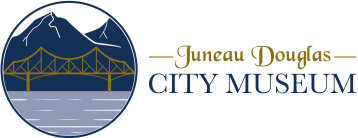Digital Bob Archive
October 1918 - Part 4
Days Of Yore
- 05/25/1991
OCTOBER 1918 - PART 4:
Both Juneau papers had banner headlines in large type on Saturday, October 26: In the Dispatch the headline said: \"Sophia's Masts Appear Above Sea.\" The Empire said: \"Princess Sophia Sinks and 350 Souls Probably Perish.\" The Dispatch added: \"No Trace Tells Fate of Hundreds Aboard Vessel. City Bowed in Sorrow Over Great Catastrophe.\"
No other boat was in sight of the Sophia when it happened. The lighthouse tender Cedar, Captain John Leadbetter, the largest vessel of the rescue fleet, dropped two anchors close to Vanderbilt Reef but they would not hold against the gale and she moved down to the south end of Shelter Island.
But if nobody saw the Sophia slide off the reef, a wireless operator in Juneau heard the last message: \"For God's sake come: we are sinking.\" That was logged at 5:20 a.m., Juneau time.
Both newspapers carried lists of the passengers, obtained by wire from Skagway. At 2:45 p.m. on Saturday Captain Leadbetter of the Cedar reported the recovery of the first body, that of an unidentified woman. The Sophia's fuel oil tanks had ruptured when she slid off the reef and nearly every body recovered was coated with heavy bunker oil. Few could be immediately identified.
Governor Thomas Riggs, Jr., issued a proclamation in which he requested that all flags in the Territory be lowered to half mast for three days and that all churches conduct memorial services. He then recruited several small boats to search for bodies and F.F.W. Lowie, Juneau agent for the Canadian Pacific steamers, hired other boats for the same purpose. Tide and wind were scattering the bodies and by Monday they were being found as far south as Colt Island, Point Hilda and Point Young.
On Monday it was reported that 160 bodies had been recovered and 50 of them had been identified. The number was taxing Juneau's facilities for caring for them. J.C. McBride, manager of the C.W. Young Company, which operated the town's only undertaking business, hastily wired for more embalming fluid and coffins.
Dozens of Juneau residents, men and women, volunteered to assist with the gruesome task of preparing the bodies of the victims. Some twenty of them were to be buried in Juneau but most were to be sent south. The bodies had to be stripped, then washed with gasoline to remove the oil. Friends and relatives and a team of Northwest Mounted Police arrived from Skagway and Whitehorse to aid with the sometimes difficult task of identification.
The bodies of many Sophia victims remained within the confines of the vessel and had to be recovered by divers. That was a slow and sometimes dangerous undertaking and it was not until the following summer that the last body was brought to Juneau. The bodies of a few passengers known to be aboard were never recovered, and there was uncertainty as to exactly how many people, including stowaways, had been aboard the Princess Sophia on that fateful night.
